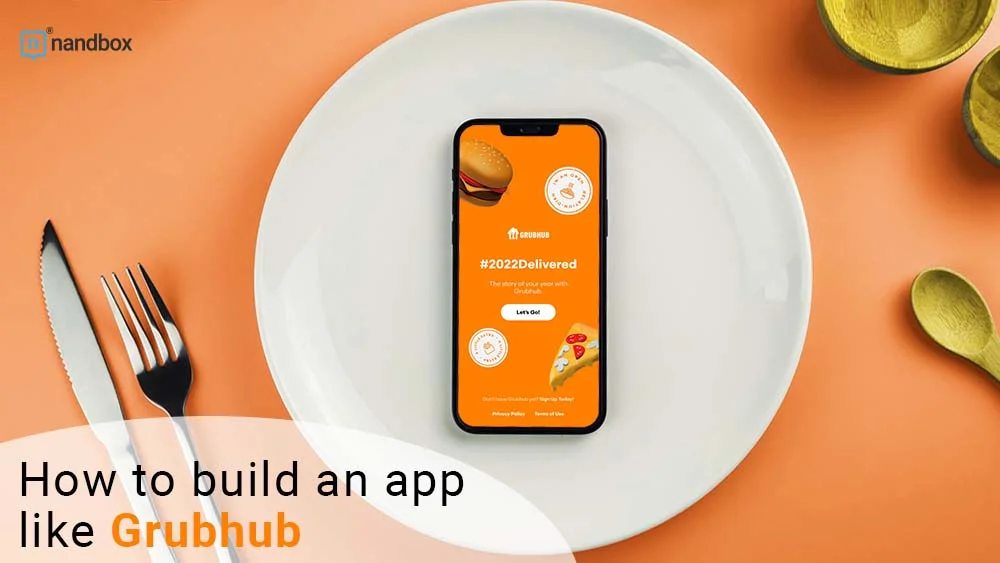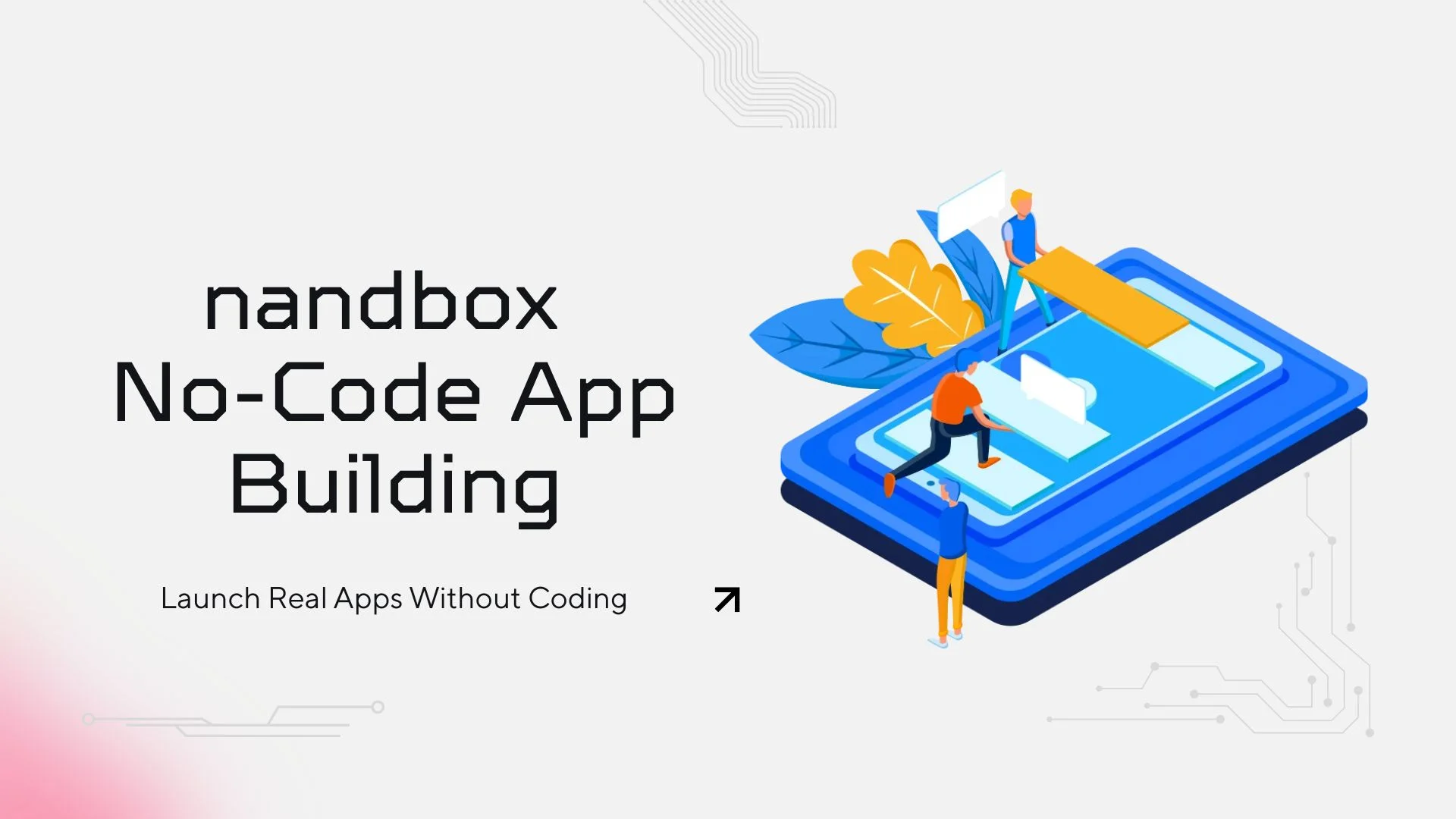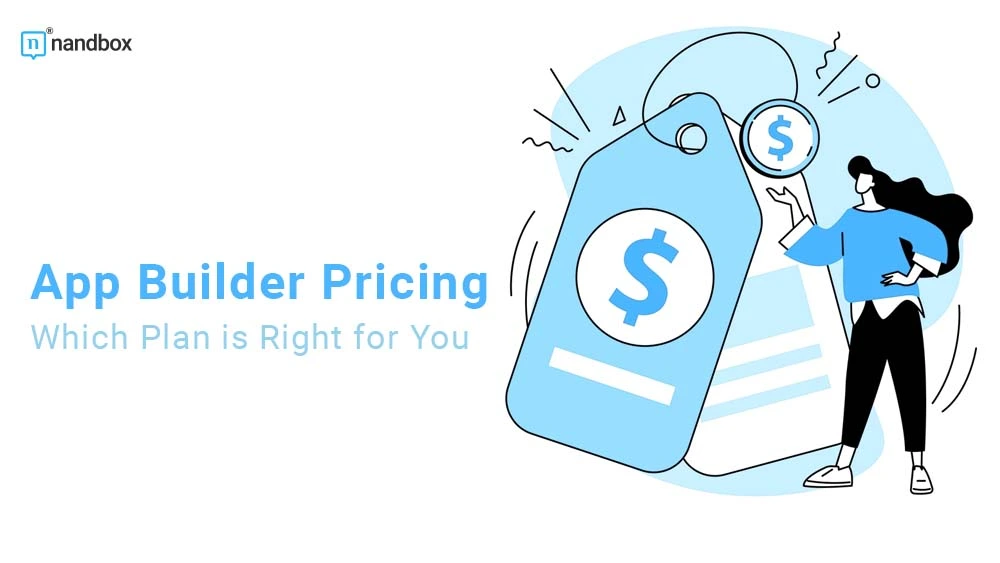More people are using mobile apps to order food and have it delivered to their doorstep. It’s a convenient and good alternative to waiting in line to provide contact information. Grubhub is one of the most renowned food delivery apps that allows restaurants to reach customers and customers to order food from their favorite restaurants. Create food delivery app like Grubhub with nandbox app builder.
Making a successful app on such a large scale requires a few key elements, such as a user-friendly interface, a reliable payment system, and a secure delivery system. This blog post will discuss Grubhub, what makes it great, and how to create a similar food delivery app.
What is Grubhub?
Grubhub is a food delivery app that connects customers to their favorite restaurants with one click. It allows customers to order from various restaurants, rate them, view menus, and track orders in real-time. Additionally, Grubhub has an extensive selection of restaurants, making it one of the most popular food delivery apps.
Customers can also order food and then pick it up themselves. If customers order for home delivery, they get a delivery time estimation. Orders can be scheduled up to seven days in advance on the website and four days in advance on the mobile app. And the platform offers promo codes for users managed by the restaurant staff.
For restaurants, a POS system and tech integrations are available to help with their workflow with little to no human interference and with maximum process automation. POS systems allow restaurants to fulfill more orders in shorter times and with fewer staff members. For example, when the restaurant updates the menu, it will automatically reflect anywhere for staff and customers, whereas before, it was done manually, wasting the time they could use to make delicious food.
Drivers get a separate app and can set their working hours and track their earnings with different payment options. They get payments via Grubhub directly, not the restaurants.
Brief History of Grubhub
Grubhub was founded in 2004 in Chicago by two web developers who were fed up with the lack of options for ordering takeout food. They wanted to make it easy to order food from restaurants that don’t typically offer delivery services. In 2006, the website won the New Venture Challenge through the University of Chicago. And from 2007 until 2011, they secured private funding from leading investors, proving their idea a success. In 2011, the company acquired Dotmenu.
Grubhub isn’t just for ordering at home, as they launched an in-restaurant ordering system in 2012. The following year, the company merged with Seamless, another online ordering website that started in 1996, and now, Grubhub owns Seamless.
Grubhub launched its first iPhone mobile app in 2009. In 2021, they updated the iOS version and revamped the Android version for a better user experience. Now the Grubhub app has over 10 million downloads on Android alone, making it the 9th most downloaded app in the food and drink category in the US.
What Makes Grubhub Great
Grubhub has a user-friendly interface on the app and website that still offers robust features. Customers can seamlessly order food online with a wide selection of restaurants. Their payment system is reliable, as their delivery is secure. Additionally, they offer discounts and coupons to users. In 2021, they launched the Grubhub guarantee, where the company promised to reimburse for late orders and match lower prices. Their Grubhub Plus memberships give members extra perks like free delivery or additional discounts. The company ensures that customers have reasons to opt for them rather than competitors.
Grubhub works on its reputation as well. They started several charitable endeavors, like Donate the Change to help those in need and the Grubhub Community Hub for communities affected by COVID in 2020. A year later, in 2021, they gave grants to drivers who made impactful changes to their communities through education and philanthropic work.
When it comes to their mobile app, they constantly update it to increase user satisfaction and loyalty. Customers report that the app is intuitive, user-friendly, and does the job trouble-free. They appreciate that they schedule orders and order in groups. And the customer service is very responsive and efficient at solving any issues.
If you’d like to start your own online food delivery service by developing a mobile app, stick around for the following walkthrough.
Must-Have Features in a Food Delivery App
User Registration and Login
Let’s face it; no one likes repetition. Users should be able to register to enter their contact information once instead of every time they want to make an order. Logging should be easy and secure, with multiple authentication methods. Another perk of profile creation is that it enables location- and activity-based personalization within the app.
Search Engine
Your app will include a list of restaurants, and instead of forcing customers to scroll endlessly, you can simply incorporate a search engine. A powerful search engine will quickly fetch results from all over the app. And a filtering option will enhance it further to allow customers to search by category or rating, for example.
Payment Gateways
Many payment options are now available to cater to different preferences. Your customers should be able to find their preferred option, to eliminate frustration. They might find everything they need on your app but get driven away by the limited payment options. You don’t want to vex a hungry customer.
Push Notifications
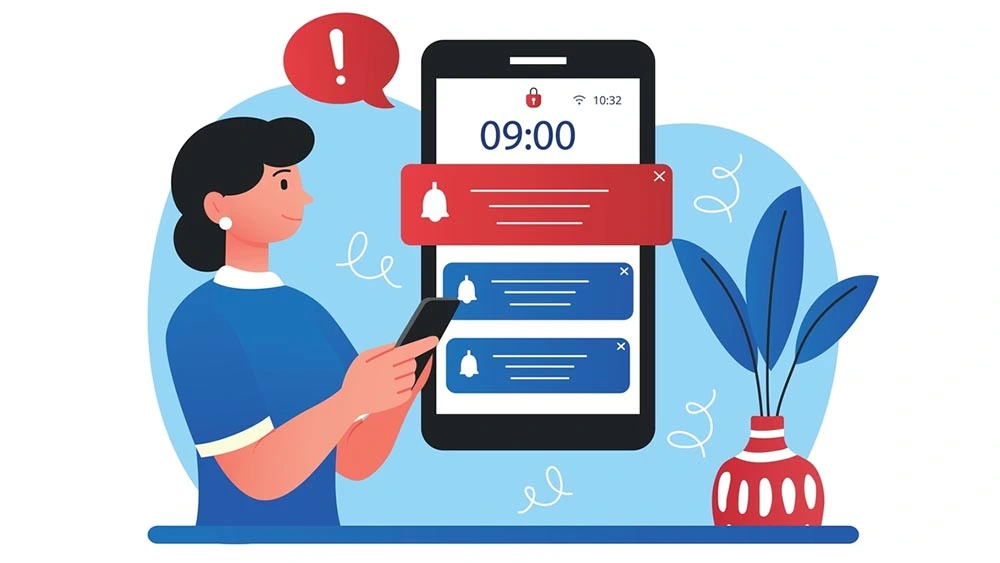
Notifications remind users that your app is there and inform them of offers, updates, and announcements. You can personalize these notifications, which many users appreciate. Just be careful not to send too many of them, as it can seem a bit “pushy.” Unfortunately, the pun is intended.
Order Location Tracking
Location-based services are a game changer in the mobile app industry. In the food delivery world, users feel much better when they can track the food delivery process in real-time. If you want customers to be more patient and understanding, give them this feature. In the event of a delay caused by delivery, they will be able to tell it’s not the restaurant or your company’s fault, but perhaps traffic.
In-App Chat
Customers prefer to know they have someone to turn to if anything goes wrong with their food delivery. Most users would rather chat than wait on the phone, so adding a live chat option in your app would be a great way to address any issues or inquiries.
Chatbot
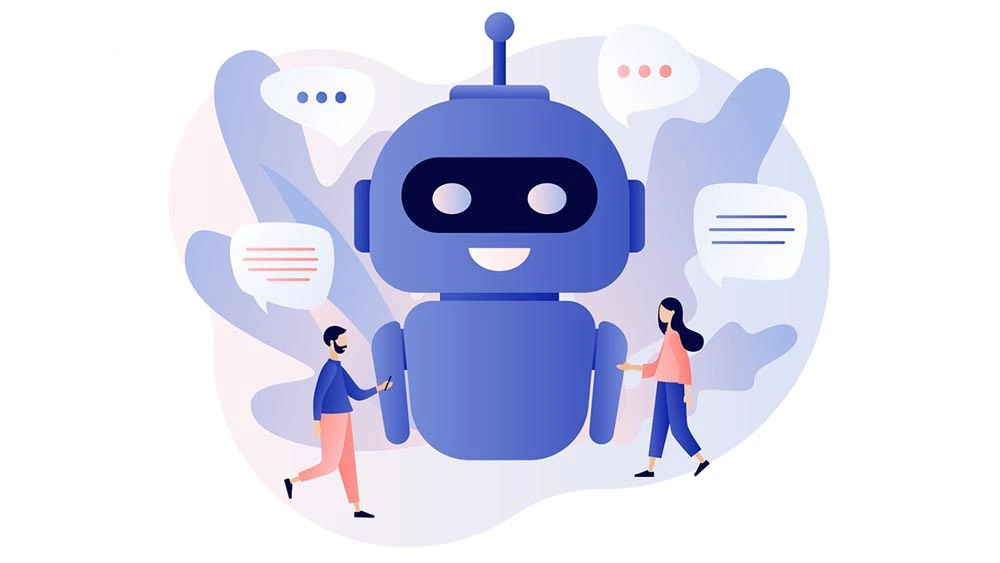
Chatbots are now favored in the tech industry because they are highly efficient in answering questions and performing tasks in seconds. For quick inquiries and commonly asked questions, you can add an API or chatbot, saving you the trouble of keeping customers waiting to reach a customer service representative.
Customer Feedback
Allowing customers to post feedback on their orders can help you learn your strengths and areas that need improvement. Not to mention that offering them a way to rate their orders and leave comments can help build trust in your brand and improve customer loyalty. You can use customer feedback to curate personalized offers and tailored discounts.
Loyalty Programs and Engagement Campaigns
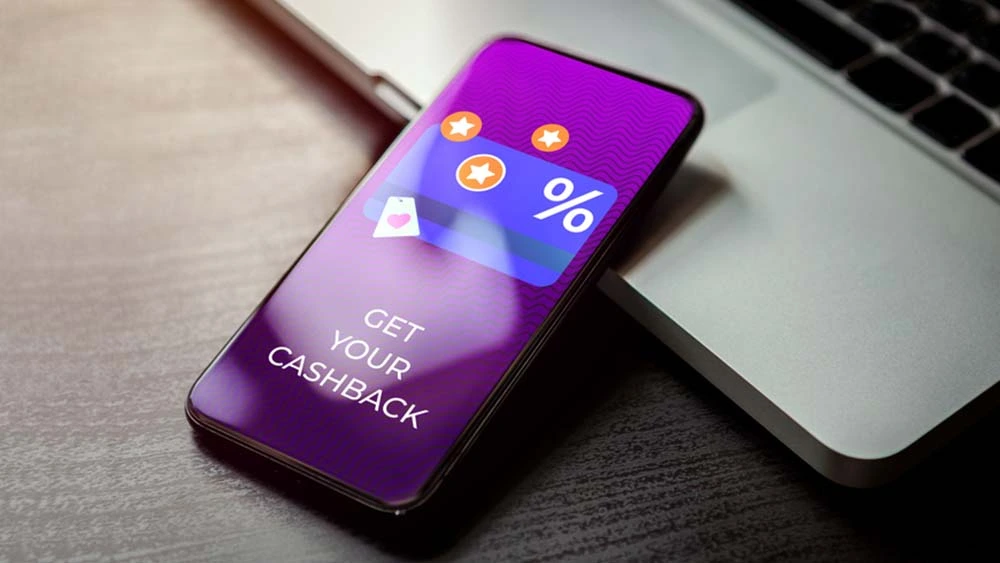
Creating a rewards program will incentivize customers to keep using your app. You can also start an engagement campaign with social media integration to encourage customers to interact with your promotional content.
Create Food Delivery App Using the nandbox App Builder
First, let’s introduce the nandbox native no-code app builder. As the long name suggests, with the platform, you can create a native app without coding skills. Native here means it’s specifically made for Android or iOS and functions as such. The developers at nandbox Inc. did all the coding so the app owner could focus on creating a good-looking, fully-functional app, which is what the nandbox app builder offers and more.
When it comes to time and cost, forget the irrational numbers of traditional app development. In less than an hour, you will get a good app and be able to test it yourself and publish it. And whatever your budget is, you will find a suitable pricing plan that you can upgrade later for higher scalability.
Now to the building process, you can add anything mentioned below by yourself without needing the help of a designer or software developer.
After picking a ready-made template or blank one, you can start the building process by choosing the app’s color and uploading the brand icon. Then you can add any of the many features, including those suited for a food delivery app, by dragging and dropping. Here are some features you can add using the nandbox app builder.
- Adding multiple fully customizable e-stores or restaurants
- Adding menu items, product add-ons, multi-tiered items, and bundles in each store
- Integrating multiple payment gateways like PayPal, Stripe, Cash, and more!
- In-App chat
- An API/Chatbot
- Location-based services
- Push Notifications
- A Powerful search engine
- Loyalty Programs and Engagement Campaigns
- User Registration
- Interactive Channels
- News Feed
These features can be available to you now after you sign up for the free trial. You will be amazed at what you can do with the nandbox native no-code app builder.
